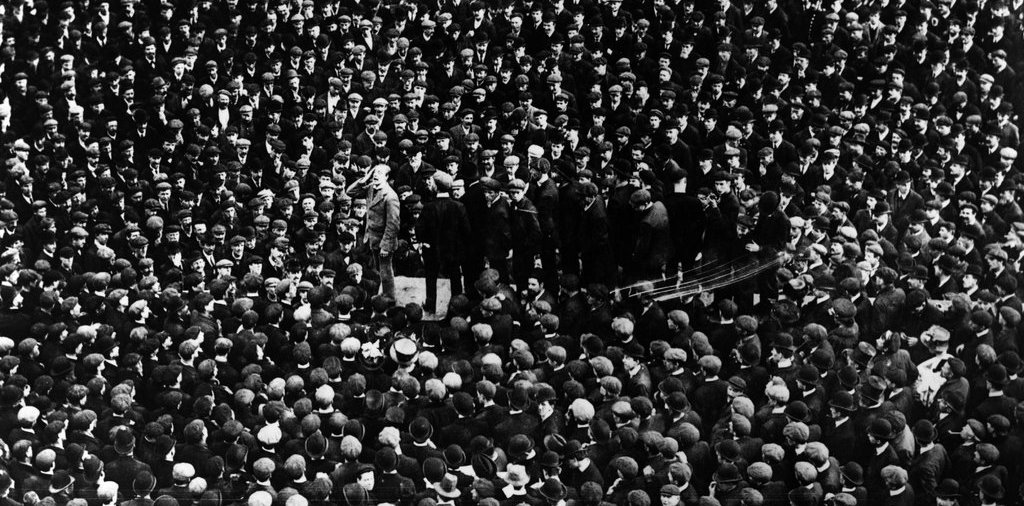Reading the many commentaries about Gustave Le Bon and his 1895 The Crowd. The Study of the Popular Mind can easily get quite repetitive. Most authors seem to agree in condemning Le Bon and his most famous book: Le Bon was a reactionary; he lamented over the demise of the Old Regime; he despised the French Revolution; he compared the “stupidity” of the crowd with that of children, savages, or women; and he put the concept of “race” at the heart of his anthropology. We cannot but agree with William Mazzarella that seen from today, “classic crowds writings [such as Le Bon’s] sit on the losing side of history” (Mazzarella, 2010: 702). Of course, I will not deny that Le Bon’s writings abound with ultraconservative statements, nor that what Christian Borch calls Le Bon’s “biopolitics” (Le Bon’s distinctive mixture of racism and politics of the body) is not at times frightening (Borch, 2009). However, I want to cast a different light on Le Bon and his writings, and I will do so in two ways: first, by taking a close look at his conceptual apparatus; second, by putting his work in context – the context of the birth of sociology at the turn of the 20th century.
Remember how James Surowiecki, the apostle of wise crowds, refers to Le Bon: as someone “appalled by the rise of democracy” and “dismayed by the idea that ordinary people had come to wield political and cultural power” (Surowiecki, 2005: xvi) What Surowiecki is doing here is reframing Le Bon’s agenda in terms of an agenda that wasn’t his: while Surowiecki claims that (wise) crowds can outsmart the best experts, Le Bon wasn’t thinking in terms of an opposition between the masses and the elite. In this regard, the English subtitle of Le Bon’s book is quite misleading: Le Bon was not at all studying the “popular mind,” but the “collective mind” (âme collective), which is a different matter altogether. What Le Bon was contrasting were the individual and the collective, the one and the many, not the patricians and the plebs, the professionals and the laymen.
Any serious reader of Le Bon’s The Crowd will have noticed how globally inconsistent the book is, despite its beautiful rhetorical flourishes and its scientific façade. But the most damaging discrepancy is probably the one between the theoretical apparatus and the many succinct examples Le Bon uses for empirical illustration. The latter are often taken from the philosopher and historian Hippolyte Taine, whose multivolume Les Origines de la France contemporaine emphasized the stupidity and irrationality of revolutionary crowds. Yet, while Taine’s (empirical) revolutionary crowds were composed of “brigands,” Le Bon’s (theoretical) crowd is not similarly socially marked. In other words, the main problem with Le Bon’s book is that his psychological concept of the crowd does not necessarily correlate with his empirical examples of crowds.
Here is how Le Bon describes a “psychological crowd”:
Under certain given circumstances, and only under those circumstances, an agglomeration of men presents new characteristics very different from those of the individuals composing it. The sentiments and ideas of all the persons in the gathering take one and the same direction, and their conscious personality vanishes. A collective mind is formed, doubtless transitory, but presenting very clearly defined characteristics. The gathering has thus become what, in the absence of a better expression, I will call an organized crowd, or, if the term is considered preferable, a psychological crowd. (Book I, Chapter I)
That a crowd need not be revolutionary or popular is made clear by the third part of the book, in which Le Bon proposes a few case studies of crowds, and offers an analysis of parliamentary assemblies – not exactly the kind of crowd the reader was expecting. And according to Le Bon, “an assembly of distinguished men” makes decisions that are nowhere superior to those of “an assembly of idiots.”
What Le Bon is interested in are the psychological characteristics of the crowd, inasmuch as a crowd is not a mere sum of individuals:
in the aggregate which constitutes a crowd there is in no sort a summing-up of or an average struck between its elements. What really takes place is a combination followed by the creation of new characteristics, just as in chemistry. (Book I, Chapter I)
Le Bon is actually using the word “crowd” as a generic term for any kind of social, or collective combination, as is made clear by his classification of crowds into heterogeneous and homogeneous crowds: the latter are composed of “sects,” “casts” and “classes.” We’re beginning to see that Le Bon’s crowd theory is not quite we thought it was: instead of expressing a reactionary contempt against revolutionary, violent, and disorganized crowds, it is revealing a genuine interest in a true sociological question – the articulation, or dialectics of the individual and the collective. Even if, of course, the respective characteristics Le Bon ascribes to both are little more than platitudes:
Le Bon’s understanding of collective behavior is predicated on the assumption that individual characteristics do not add up – and such is the case of intelligence. Put a crowd of people together, whether educated or not, and you will inevitably end up with stupidity. However, and contrary to what is often said, Le Bon’s characterization of crowds is not entirely negative. If in his examples he stresses their destructive features, he nevertheless recognizes that they are necessary to the progress of civilization:
If disinterestedness, resignation, and absolute devotion to a real or chimerical ideal are moral virtues, it may be said that crowds often possess these virtues to a degree rarely attained by the wisest philosophers. […] Had they, in certain cases, reasoned and consulted their immediate interests, it is possible that no civilization would have grown up on our planet and humanity would have had no history. (Book I, Chapter II, 5)
Instead of seeing Le Bon’s crowd as a testament to the reactionary and antidemocratic values of the late 19th century, we’d rather read it as a genuine, if awkward, attempt at establishing a science of the collective, or a science of the social – something not very different from what other contemporaries, such as Gabriel Tarde and Émile Durkheim in France, were doing. When Tarde introduced the question of criminal crowds in 1893 (two years before Le Bon’s book), he started his essay by complaining about the “crisis of individualism which has, since the last century, been rampant, whether in politics, political economy, ethics or law.” (Tarde, 1893: 349) By turning his eyes away from individual crimes and toward collective or social crimes, Tarde was appealing to “a sociological or socialist reaction against the great egocentric illusion.” In his own way, Le Bon was contributing to such a reaction.
Next blog post: Crowds and the Great Fear of 1789. Moving from theoretical crowds to empirical crowds, I will study how the great Annales historian Georges Lefebvre used, subverted, and criticized Le Bon’s crowds in order to study the general (and seemingly irrational) panic that took place at the start of the French Revolution.
References:
Christian Borch, “Body to Body: On the Political Anatomy of Crowds,” Sociological Theory, vol. 27, n. 3, 2009, pp. 271-290.
Gustave Le Bon, Psychologie des foules, Paris: Alcan, 1895 (translated as The Crowd. A Study of the Popular Mind, New York: Macmillan, 1896).
William Mazzarella, “The Myth of the Multitude, or, Who’s Afraid of the Crowd?,” Critical Inquiry, vol. 36, n. 4, 2010, pp. 697-727.
James Surowiecki, The Wisdom of Crowds, New York: Anchor Books, 2005.
Hyppolite Taine, Les Origines de la France contemporaine, Paris: Hachette, 1875-1893.
Gabriel Tarde, “Les foules et sectes criminelles,” Revue des deux mondes, 1893 (November 15), pp. 349-387.




Recent Comments